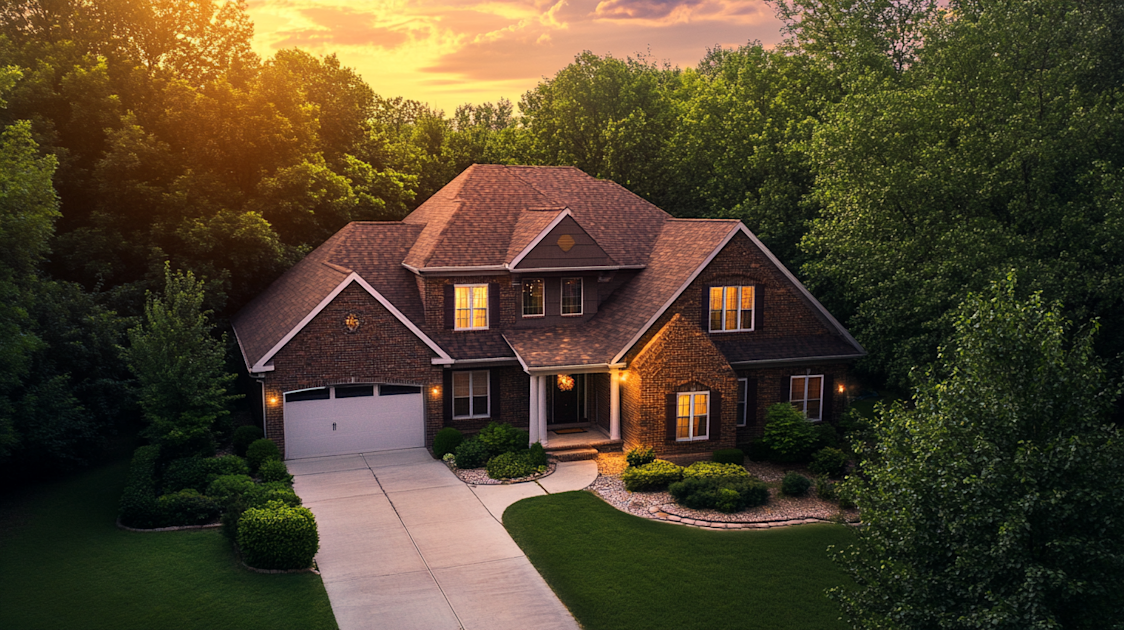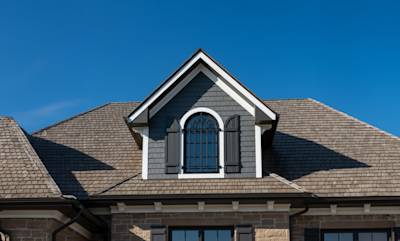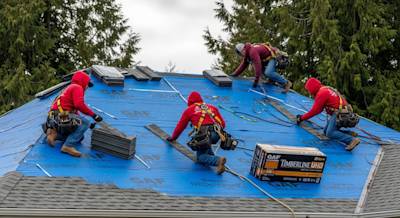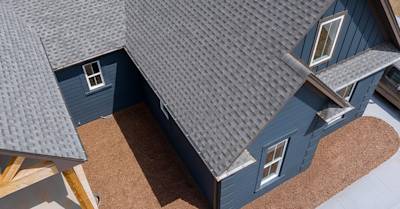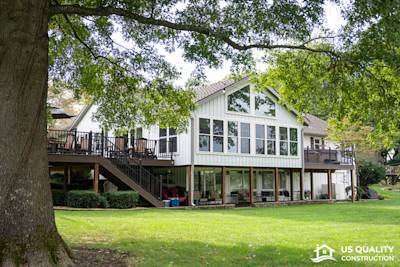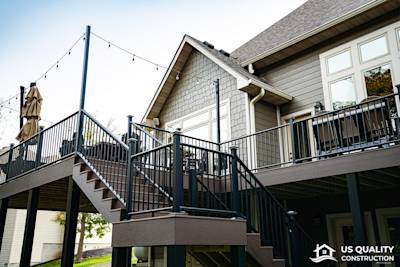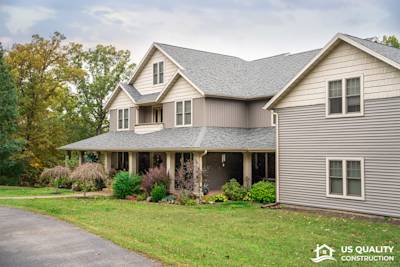Your roof is an integral part of your home, often undervalued despite its significance. Understanding its lifespan or roof life expectancy can help you plan efficiently for its repair or replacement while saving costs. This article highlights factors that impact the life expectancy of various roofing materials and signs indicating the need for a roof inspection.
What Influences Roof Life Expectancy?
Material Selection
One of the most significant factors affecting your roof's life expectancy is the material you choose. The quality and type of your roofing material directly impact how long your roof will last.
For instance, asphalt roofing shingles, the most commonly used material, can last 15 to 30 years. Wood shingle roofs last about 15-25 years, while metal roofs can last up to 60 years or even more. Slate, clay tile, and concrete roofs have an unbeatable durability, lasting up to a century under apt conditions.
Roof Installation Quality
Even the best materials can underperform when not properly installed. Therefore, it's crucial to hire a professional roofing contractor with significant industry experience. Improper installation can lead to weak spots and can significantly reduce roof life expectancy.
Weather Conditions
Extreme weather conditions like hail, high winds, heavy snow, or heat waves induce wear and tear and can reduce your roof's life expectancy.
Maintenance and Repairs
Regular checks and timely repairs can prolong your roof's life. Ignoring minor issues can lead to major problems and shorten the roof's lifespan.
How To Estimate The Life Expectancy Of Your Roof?
Know your roof's age and material. If it's nearing the common life expectancy of that material, start preparing for eventual replacement. Check for signs that indicate a compromise in the roof structure. Some signs might suggest immediate attention, despite the roof not reaching its average lifespan. These signs include:
- Shingles curling or buckling
- Roof sagging
- Dark or wet spots
- Leaks or water damage
Extending Your Roof's Life Expectancy
To get the maximum lifespan out of your roof, regular maintenance cannot be underrated. Here are a few tips:
Regular Inspections
This is the first step in maintaining your roof's health and extending its roof life expectancy. Hire a professional to inspect your roof systematically to detect any potential hazards.
Immediate Repairs
Minor damages if left ignored, can lead to major issues in due course. Thus, always deal with minor leaks, cracks, or other damages immediately.
Clean Your Roof
Regular cleaning can prevent the accumulation of debris, growth of moss or algae, which might lead to roof deterioration.
Insulation and Ventilation
Proper insulation and ventilation prevent heat damage and maintain the roof's condition, thus extending its lifespan.
Frequently Asked Questions about Roof Life Expectancy
What Factors Affect The Life Expectancy of a Roof?
Various factors play a significant role in determining the lifespan of your roof.
-
Material: Different materials have different lifespans. For example,
- Composite or asphalt shingles: 15–20 years
- Wood shingles and shakes: 20–25 years
- Clay or concrete tiles: 50+ years
- Metal Roof: 50+ years
- Slate: 100+ years
-
Installation: The skill and experience of the installation team can directly impact the longevity of your roof.
-
Climate & Weather: Extreme heat, cold, or regular severe weather events can decrease your roof's life expectancy.
-
Maintenance: Regular maintenance can help to counter any wear and tear and improve the life expectancy of any roof.
-
Ventilation: A properly ventilated roof can extend the roof's life by reducing the buildup of heat and moisture that can lead to damage over time.
Does Maintaining Your Roof Extend Its Life?
Absolutely! Regular inspections and maintenance can greatly extend the lifespan of your roof. This usually involves checking for damage, clearing debris, and ensuring your gutters are clean. Ensuring damages like missing or worn shingles are repaired promptly can also keep minor issues from escalating into major problems that could drastically reduce your roof life expectancy.
How Often Should You Replace Your Roof?
The frequency varies depending on the materials used in your roofing, the weather in your area, and how well your roof is maintained. Asphalt shingle roofs typically need replacement every 20 to 25 years, while roofs made of more resilient materials like metal, tile, or slate can last 50 to 100 years or more.
Can I Increase My Roof's Life Expectancy?
Yes, indeed! Regular maintenance and prompt repairs will extend your roof's lifespan. Good attic ventilation can cool your roof in the summer, reducing expansion and contraction cycles that speed up wear and tear. Proper insulation can also prevent warm, moist air in your home from reaching and damaging your roof structure.
What Are Signs That My Roof's Life Expectancy Is Coming To An End?
Some tell-tale signs include:
- Shingles are cupped, buckled, or cracked
- Your roof is at least 20 years old
- Neighbors are getting new roofs (Homes built around the same time experience the same weather conditions)
- You're finding granules in the gutter (a sign your roof is losing its protective coating)
- You notice damage around roof objects and openings
Can I Get A Professional Inspection To Determine My Roof Life Expectancy?
Most definitely. Professional roofing contractors can inspect your roof and give you an estimate on its remaining life expectancy. These inspections typically involve checking the interior and exterior of your roof, the flashing, the condition of the shingles or other material, and the gutters and downspouts.
Summary
From everything we've discussed, you now have a clearer picture of roof life expectancy. It's not a static thing. A roof's life can stretch longer if taken care of properly. This might mean periodic maintenance, checking for minor issues before they escalate, or just doing an overall cleaning for those pesky moss or algae. Remember, a roof is a significant investment and you'd want it to serve you as long as it possibly can.
Now, we shouldn't ignore the fact that different roofing materials have various roof life expectancy. Asphalt shingles might give you 20 good years while metal or tile roofs could go up to 50 years or more. So, when you're in a position to choose a roofing material, it's smart to weigh these factors in your decision-making process.
Lastly, external factors have a significant impact on your roof's life expectancy. This includes the local weather conditions, nearby trees, and even the air quality in your area. Keep an eye on these factors and take necessary action whenever required. After all, having a roof over our heads- a sturdy one at that- provides us comfort and peace of mind.
About US Quality Construction
US Quality Construction is your go-to in Kansas City, MO for all things related to home and commercial construction. Born out of a passion for quality craftsmanship, we've been operating in the heartland of America since our establishment and have earned a reputation for excellence and reliability. We understand that construction is more than just putting together materials - it's about creating spaces where memories will be made. That's why we've assembled a team of qualified professionals who prioritize customer satisfaction and have an eagle eye for detail to ensure your vision comes to life flawlessly. Trust us with your next building project and experience the US Quality Construction difference.
Tags: roof maintenance, roof replacement, roofing materials,


